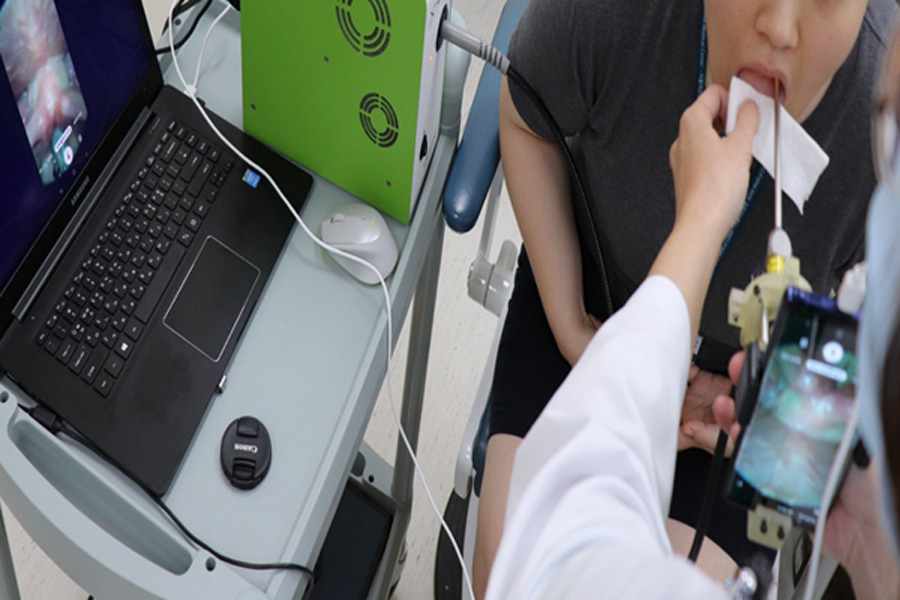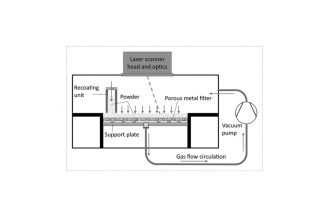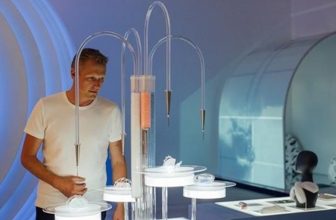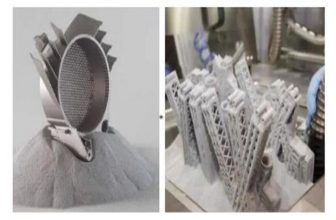
A group of Korean scientists have developed a low-cost 3D printing adapter that can turn everyday smartphones into endoscopic vocal cord disease diagnosis tools. Once the laryngoscope plug-in is installed, the team’s SLM 3D printing device can capture and transmit high-quality images of the patient’s throat using the built-in camera of any modern mobile phone. Given that the cost of mobile add-ons is much lower than traditional digital imaging systems, for clinicians operating in developing countries, it may become an accessible instant analysis tool in the future.
The team said in their paper: “This simple, low-cost adapter is expected to reduce the cost of clinical imaging by an order of magnitude because it can be used as a substitute for standard high-speed digital imaging (HSDI).” “The device demonstrates. The prospects and emerging features of clinical diagnostic tools that combine commodity smartphone technology to bring instant diagnosis to remote areas.”
Human endoscope
For devices that are essentially long and thin flexible tubes, endoscopes are an important tool in the medical staff’s arsenal because they can visualize internal organs that are otherwise obscured. In areas such as throat diseases, such devices not only allow doctors to perform minimally invasive surgery, but also enable more specific diagnosis through clinical voice evaluation. With vocal cord assessment, the clinician’s main goal is to detect disease-related irregularities, but considering that most sounds operate at 80-240 Hz, using standard 60fps video makes this difficult. Although improved HSDI devices have been developed, they are generally more expensive, require specialized knowledge to use, and have a large data footprint that requires post-processing.
As a result, patients and staff in developing countries are largely unable to obtain endoscopic diagnosis and training, which can lead to poorly executed or even fatal procedures. Therefore, creating a more affordable and easy-to-manage HSDI imaging system has become an urgent The problem for those in the third world seeking to assess their disease.
Since many smartphones now have the processing power of small computers, they have previously shown considerable potential in similar fields. Researchers use them for everything from biological analysis to blood testing, and draw inspiration from these methods. The Korean team chose Develop a new low-cost endoscope mobile adapter.
Higher resolution oral surgery?
The researchers’ equipment is designed for standard laryngoscopes and consists of a stent, a barrel, a lens, and an endoscope stent. To optimize the performance of its smartphone accessories, the team used the Stratasys Objet260 3D printer to create a bracket and connector, and by fixing its lens system in place, the part allowed it to magnify the image captured by the eyepiece and camera, respectively.
In addition, the device does not use an achromatic lens for image magnification, but is equipped with two low-cost 50mm and 15mm biconvex lenses that provide 1.5x zoom. When they were ready, the scientists connected their installable endoscopes to the Samsung Galaxy Note 9 smartphone and asked otolaryngologists to conduct tests on four consenting patients at the Asan Medical Center in South Korea.
Under the best performance, the system proved to be able to operate at a resolution of 43.478 microns within a distance of 15 mm, but as the device moved further, the accuracy decreased significantly. Compared to a commercial HSDI system worth $10,000, the team’s adapter also captured much lower detail, recording images at 940 fps instead of the 4000 to 8000 fps seen in more standard equipment.
The researchers concluded that the resolution and frame rate defects of their adapters are currently insufficient to capture the details needed to diagnose many vocal cord conditions, but they suggest that optical shielding and AI-based image processing can be used to overcome its performance and capture-in the future Related issues. Our results show that clinical images can be processed to obtain diagnostic reference values useful for healthy subjects. “In the future, it will be necessary to develop more compact and optically shielded adapters… to improve the distribution of medical and healthcare capabilities. “





